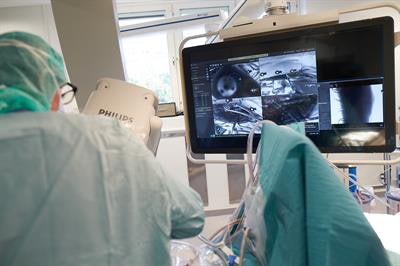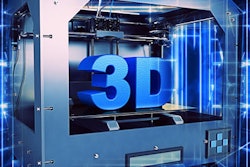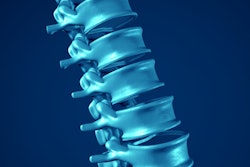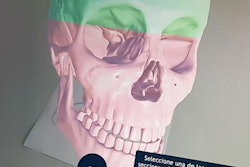
Researchers from Sweden have used augmented reality navigation technology to overlay 3D conebeam CT scans onto a real-time video of patients undergoing spinal surgery, according to a recent article in Spine. The technique improved the accuracy of implanting pedicle screws in these patients.
Inserting pedicle screws into the spine of patients during surgery is an exacting task, with poor screw placement often resulting in neurological or vascular injuries that require yet another invasive procedure for correction, noted co-first authors Dr. Adrian Terander, PhD, from Karolinska University Hospital and Rami Nachabé, PhD, of Philips Healthcare.
The conventional method for completing the task involves using 2D radiographic imaging to guide screw placement, although 3D CT-guided methods have become increasingly more common due to their capacity to detect misplaced screws.
 A surgeon using the augmented reality navigation technique to insert pedicle screws for spinal surgery. Image courtesy of Rami Nachabé, PhD.
A surgeon using the augmented reality navigation technique to insert pedicle screws for spinal surgery. Image courtesy of Rami Nachabé, PhD.Recently, advances in augmented reality technology have led to the development of a new intraoperative navigation method. The navigation technique requires four small video cameras attached to a C-arm machine (AlluraClarity Flexmove, Philips Healthcare). The device can display 3D conebeam CT scans of the clinicians' planned surgical path, together with real-time video of the surgical field, on a medical monitor (Spine, 17 September 2018).
In a prior study, Nachabé and colleagues tested this augmented reality navigation technique on animals and found it to be highly accurate for pinpointing sites during interventional procedures. Following the success of this preclinical trial, they adapted the technique to guide an orthopedic surgeon intraoperatively as he placed 253 pedicle screws in 20 patients undergoing spinal surgery. Two neuroradiologists and an orthopedic spine surgeon independently assessed the positioning of the screws.
Overall, they found the surgeon achieved an accuracy of 94.1% for screw placement using the augmented reality navigation technique. This compares well with the screw placement accuracies of more conventional methods, which range from as low as 27.6% to as high as 96.5% in the thoracic spine, according to the authors.
The surgeon did not severely misplace any of the screws, although he did slightly misplace 15 (5.9%) screws, with a mild error of between 2 mm to 4 mm. The intraoperative revision rate for screw placement was 1.2%, compared with the approximately 9% for 3D CT image-guided methods.
On average, it took the surgeon 5.2 minutes to insert a screw using the new technique, which falls within the 5.1 minutes to 5.4 minutes standard using 3D CT.
"This clinical study is the first to assess augmented reality surgical navigation for pedicle screw placement in a hybrid operating room," the authors wrote.
The method can be used in a clinical setting to insert screws into the spine with high accuracy and acceptable navigation time, minimizing the risk of complications and the need for follow-up corrective surgery, they concluded.



















